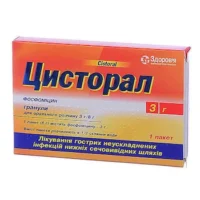Description
Sulbactomax (Ceftriaxone, Sulbactam) Powder for Solution for Injection 1000 mg/500 mg. 20 ml. №1 Vial
Ingredients:
- Each vial contains ceftriaxone 1000 mg and sulbactam 500 mg.
Dosage:
The usual dose is 1-2 grams (ceftriaxone) every 12-24 hours.
Indications:
Sulbactomax is indicated for the treatment of infections caused by susceptible organisms, including respiratory tract infections, skin and soft tissue infections, urinary tract infections, and more.
Contraindications:
Do not use Sulbactomax if allergic to any of the ingredients or if there is a history of severe allergic reactions to beta-lactam antibiotics.
Directions:
Sulbactomax is for intravenous or intramuscular use only. Reconstitute with the appropriate diluent before administration.
Scientific Evidence:
- Sulbactomax has demonstrated efficacy in various clinical studies.
- Research has shown that the combination of ceftriaxone and sulbactam exhibits potent antibacterial activity against a wide range of pathogens.
Additional Information:
- Complete the full course of treatment as prescribed to avoid incomplete treatment and antibiotic resistance.





